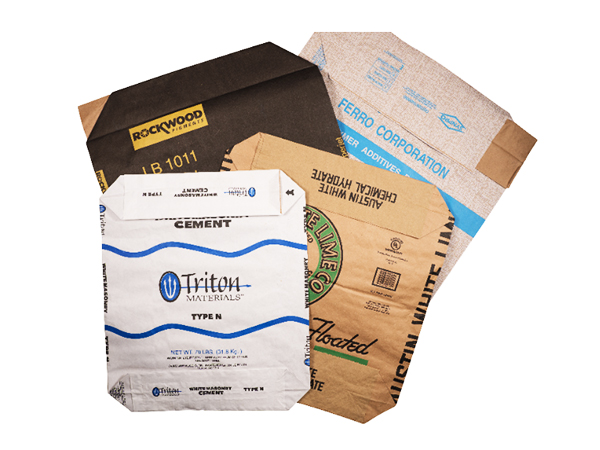Essential Machinery for Bulk Bag Production
Release time:2025-05-29 Classification:Knowledge
The manufacturing of Flexible Intermediate Bulk Containers (FIBCs), commonly known as bulk bags, relies on sophisticated and specialized bulk bag production equipment. This integrated machinery transforms raw polypropylene (PP) or other polymer materials into the robust, high-capacity containers essential for industries ranging from chemicals and minerals to food and pharmaceuticals. Understanding the core components of this production line is crucial for appreciating the complexity and quality control involved.

1. Raw Material Handling & Preparation Systems:
The journey begins with polypropylene resin, typically in pellet form. Bulk bag production equipment starts with systems for:
- Resin Storage & Conveying: Large silos store virgin or recycled PP pellets. Automated pneumatic or vacuum conveying systems transport the material efficiently to the processing stage.
- Mixing & Additive Introduction: Precision feeders accurately blend the base polymer with essential additives like UV stabilizers, anti-static agents, color masterbatches, or specific modifiers. Consistent mixing is vital for product uniformity.
2. Extrusion Lines:
This is where pellets become tape yarn (fibrillated or non-fibrillated), the fundamental building block of the woven fabric.
- Extruders: Single or twin-screw extruders melt and homogenize the polymer blend. Precise temperature control along multiple heating zones ensures optimal melt viscosity.
- Die Heads: The molten polymer is forced through a flat die to form a thin, wide film sheet. Die design and lip adjustment are critical for consistent sheet thickness.
- Quenching Bath: The hot film sheet is immediately cooled in a water bath, solidifying it.
- Stretching/Orientation Units (Tenter Frames): The cooled film sheet undergoes sequential stretching in both the machine direction (MD) and transverse direction (TD) using heated rollers and tenter chains. This biaxial orientation dramatically increases the tensile strength and stability of the resulting tapes.
- Fibrillation Units (Optional): For producing fibrillated tape (creating a network of fine fibers for better bulk), the oriented film passes through needle rolls or blades that split the film into a mesh-like yarn.
- Winding Stations: The final tape yarn is wound onto large bobbins (cheeses) ready for weaving. Tension control during winding is paramount.
3. Circular Weaving Looms:
These are the heart of fabric production, weaving the tape yarn into the tubular body fabric of the bulk bag.
- High-Speed Looms: Modern circular looms operate at high speeds, efficiently interlacing warp (lengthwise) and weft (circular) tapes.
- Creels: Hold the numerous warp yarn bobbins, feeding them into the loom under controlled tension.
- Shedding Mechanisms: Raise and lower warp tapes to create the shed for the weft insertion.
- Weft Insertion Systems: Shuttles, rapiers, or air jets insert the weft tape rapidly and precisely around the circular path.
- Beat-Up & Take-Up: The reed beats the newly inserted weft pick into place, and the take-up mechanism winds the finished fabric onto rolls. Fabric density (picks and ends per inch/cm) is precisely controlled here. Loom width dictates the final bag circumference.
4. Cutting & Printing Equipment:
- Fabric Inspection & Unwinding: Woven fabric rolls are inspected and fed onto cutting tables.
- Computer-Guided Cutting Tables: Large flatbed or rotary cutting machines use templates or CNC programs to accurately cut fabric panels for the bag body, bottom, and lifting loops. Precision is essential for consistent assembly and performance.
- Printing Systems: Flexographic or digital printers apply necessary markings, safety warnings, product information, logos, and handling instructions directly onto the cut panels before sewing. Registration accuracy is crucial.
5. Sewing Stations:
This stage assembles the bag components into the final FIBC structure.
- Industrial Sewing Machines: Heavy-duty, specialized machines are used. Key types include:
- Single-Needle Lockstitch Machines: For general seams, labels, and some lifting loops.
- Multi-Needle Chainstitch Machines (e.g., 401 chainstitch): Primarily used for attaching lifting loops to the bag body. This stitch type offers high strength and elasticity, critical for safe lifting.
- Overlock/Safety Stitch Machines: To finish raw edges and prevent fraying on panels and loops.
- Material Handling: Conveyor systems or operators carefully position heavy fabric panels under sewing heads. Proper needle type (size, point), thread type (PP, polyester - high tenacity), tension, and stitch length are meticulously controlled to ensure seam strength meets or exceeds international standards (e.g., ISO 21898).
6. Lifting Loop Attachment & Forming:
- Dedicated Loop Sewing Stations: High-tension multi-needle machines specifically designed to attach the critical lifting loops securely to the bag body fabric. Reinforcing patches are often sewn simultaneously.
- Loop Forming Machines: Cut and fold fabric strips into the precise loop shapes before attachment.
7. Lining Attachment (For Lined Bags):
- Separate Sewing Lines: If a polyethylene (PE) liner is required for moisture or contamination protection, specialized machines attach the pre-formed liner securely inside the main woven bag structure. Seam sealing might be involved.
8. Quality Control & Testing Equipment:
Integrated throughout the process and at final stages:
- Tensile Strength Testers: Measure the breaking force of tapes, webbing, and sewn seams.
- Drop Test Rigs: Simulate real-world drops to validate bag design and construction.
- Top Lift Testers: Apply controlled force to lifting loops to ensure they meet rated Safe Working Load (SWL) requirements.
- Seam Inspection: Visual and sometimes destructive testing of seam integrity.
- Dimension Checks: Ensuring consistent bag size.
- Weight Measurement: Verifying fabric weight (gsm).
Modern bulk bag production equipment represents a highly integrated and technically advanced manufacturing system. From the precise melting and orientation of polymer pellets into strong tape yarn, through the high-speed weaving of robust fabric, to the critical sewing operations that assemble and reinforce the final structure, each machine plays a vital role. The effectiveness of this bulk bag production equipment directly determines the safety, reliability, and performance of the FIBCs used globally to transport and store bulk solids. Continuous innovation focuses on increasing automation, enhancing precision, improving energy efficiency, and integrating sophisticated quality monitoring systems directly into the production flow. Understanding this machinery is fundamental to producing bulk bags that consistently meet demanding industry standards.






